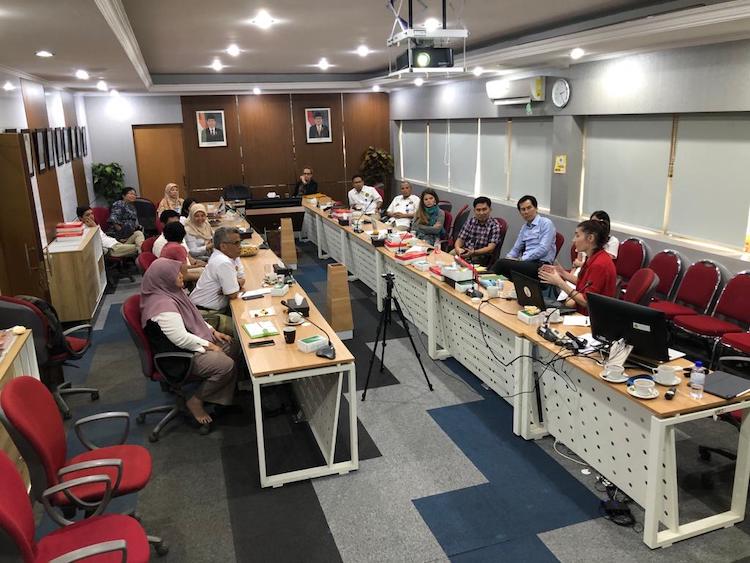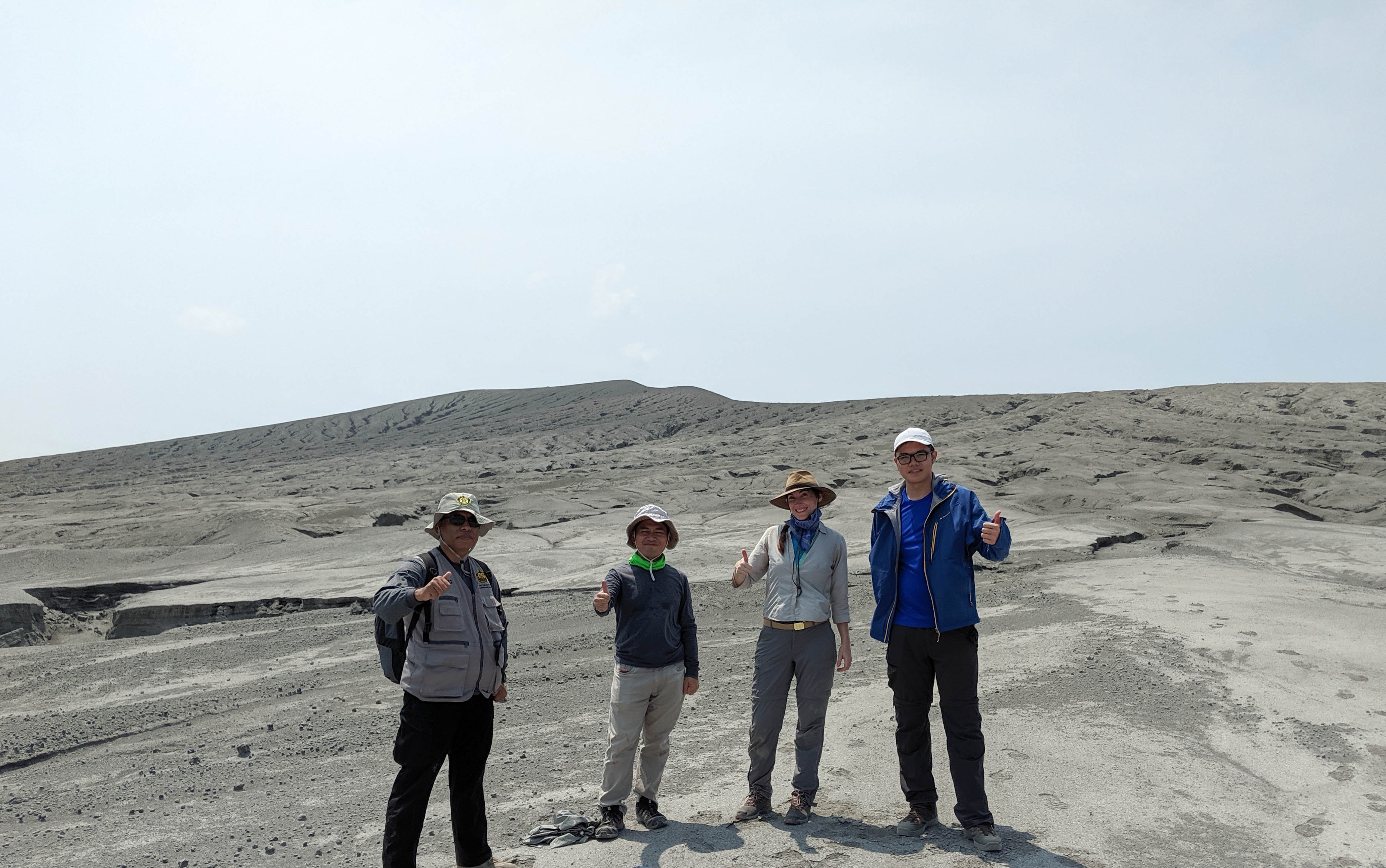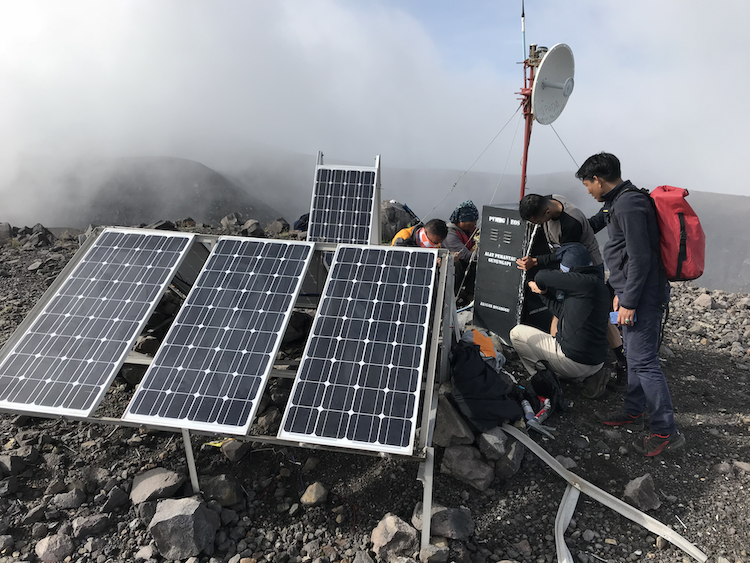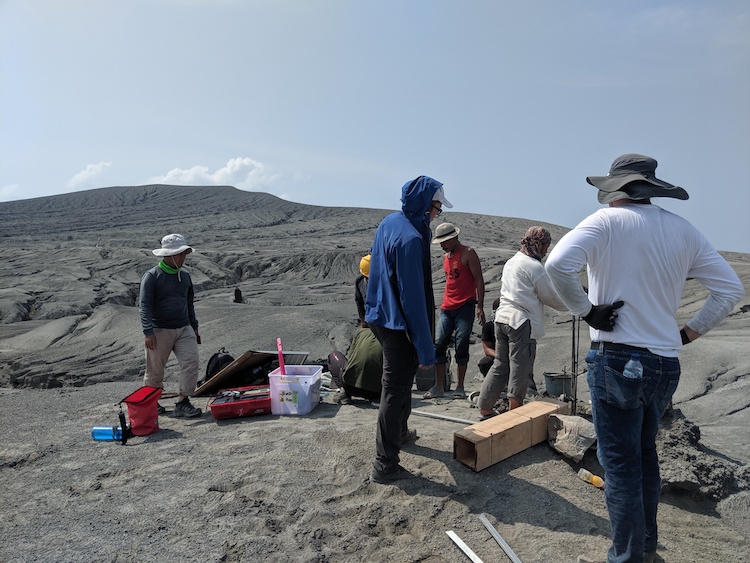Last December, the Earth Observatory of Singapore (EOS) celebrated the 10th anniversary of its collaboration with the Centre for Volcanology and Geological Hazard Mitigation (CVGHM).
Over the past decade, EOS and CVGHM have shared knowledge, expertise, and adventures through fieldwork, workshops, and publications.

"This long-term collaboration has enabled us to refine eruption histories, unravel magma storage conditions and eruption dynamics, further our understanding of related geophysical signals, and evaluate the implications in terms of hazards in one of the most populated and volcanologically active regions of the world," said Assistant Professor Caroline Bouvet de la Maisonneuve, a Principal Investigator at EOS.
Dr Hanik Humaida, Head of the Geological Disaster Technology Research and Development Center (BPPTKG), the Technical Implementation Unit under CVGHM, reflected on the progress and achievements of this partnership over the past 10 years: "The efficient process of post-graduate admission for candidates from CVGHM, the knowledge transfer and capacity building on the development of petrology laboratory analysis through trainings and exchange experiences, and the development of historical eruption and monitoring database systems."
Of these systems, the associated data analysis, and discussions, Dr Humaida believes they are "very useful during Merapi volcano crisis response."
Joint observation stations
EOS and CVGHM have installed and maintained more than 20 observation stations around four Indonesian volcanoes: Marapi, Gede, Salak, and Krakatau.
"A strong collaboration is essential for ensuring the remote stations are functioning well to measure and record volcano activity data," said Mr Leong Choong Yew, Director of the Centre for Geohazards Observations at EOS. "During fieldwork, we benefit from each other’s competencies and experience to service the stations, often learning best practices from one another. Even during the current pandemic period where overseas travels are not allowed, the staff communicates regularly to exchange notes on volcanic events and other technical matters," he added.

The observation stations have recorded earthquakes, ground deformation, gas emissions, and infrasound signals. The data collected from these stations provide invaluable insight into volcanic processes, which in turn contributes to safer communities.
Scientific discoveries
The stations around Marapi have recorded a wealth of seismic data, including seismic waves that originated from distant earthquakes and travelled through the volcano to reach the stations. Using these data, which contain information about the environments the waves pass through, scientists located the magma chamber of the volcano, where magma is stored. This finding provides important information on the potential hazards from the volcano.

Around Gede and Salak, the seismic stations have recorded several sequences of earthquakes that occur close in time and space. They are called seismic swarms and can be caused by many processes. A novel method applied by scientists from EOS and CVGHM showed that the source of these past swarms is not related to the migration of magma within the volcanoes. Instead, scientists surmise that complex interactions between the volcanoes, earthquakes, and rainfall could be the source of these swarms.
After Krakatau’s large eruption in 2018, CVGHM and EOS embarked on another project to install observation stations. This time, their purpose was to capture another type of signal: infrasound. When an eruption occurred in April 2020, a crater lake had filled the summit area of the volcano. The infrasound stations which recorded this eruption therefore enable EOS scientists to conduct fundamental research on infrasound through volcano crater lakes. Their findings will improve volcano monitoring at volcanoes topped by crater lakes. Ms Anna Perttu, an EOS Research Associate, said, "the 1883 eruption of Krakatau was the birth of infrasound as a field of study and as a geophysicist specialising in volcano infrasound, it is an honour to work on this volcano."

Sharing knowledge
Over the decade of partnership, EOS and CVGHM have conducted and participated in a range of training workshops and regular meetings to exchange knowledge and best practices. The series of virtual workshops CVGHM organised last year in celebration of its 100th year anniversary was a great opportunity to share knowledge and research. Through a two-month-long event, CVGHM celebrated its challenges and successes with a series of presentations from many partnering institutes, including EOS. Professor Fidel Costa and Assistant Professor Caroline Bouvet de la Maisonneuve gave talks about their ongoing research that has strong links with CVGHM.
"It is always a pleasure to conduct training at CVGHM as they are passionate about their work and the opportunity to collaborate, acquire and apply new knowledge. Those sessions are a unique opportunity to share experience, both ways, and I enjoy learning from them as much as I enjoy sharing my research and its implications for volcano monitoring," said Associate Professor Benoit Taisne, a Principal Investigator at EOS.
In Singapore, several graduate and undergraduate students have directly benefitted from this on-going collaboration between EOS and CVGHM. One of them, Mr Andika Bayu Aji, is an employee from CVGHM who is currently working towards a PhD with Assoc Prof Benoit Taisne. "The encouraging and welcoming environment of EOS enables me to grow both hard and soft skills that could be beneficial for CVGHM in the future," Mr Bayu Aji said.

"All these exchanges have been very stimulating, and we hope to continue this momentum toward expanded knowledge and sharing," Asst. Prof Bouvet de la Maisonneuve shared.
Echoing this sentiment, Dr Humaida said, "We hope this collaboration will keep going and continue producing useful and good results in the future."
We look forward to many more years of successful partnership with CVGHM.